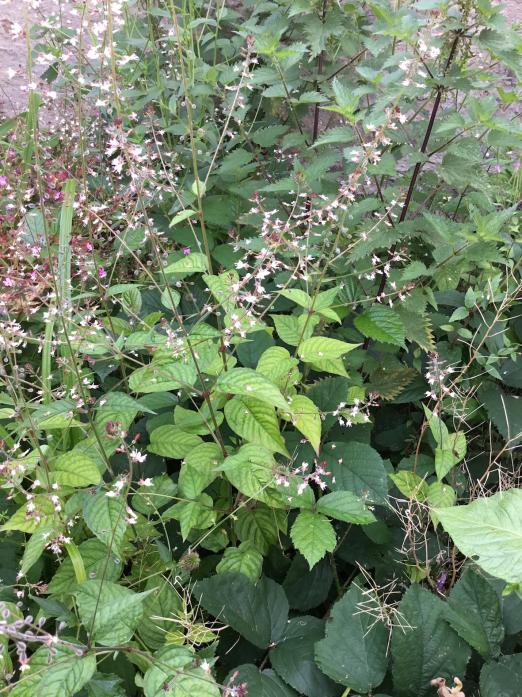
Enchanter's Nightshade (Circaea lutetiana)
THE name enchanter’s nightshade is slightly misleading, since it is neither a nightshade nor is it known to enhance enchantment.
You might be tempted to think that Carl Linneus, who named it, was having a laugh.
The Latin Circaea refers to Circe, the enchantress, who lived in a wood on the island of Aeaea, and who tempted Odysseus’s men on to her island, where she turned them into swine.
And the specific name lutetiana is the Roman reference to the place that became known as Paris, also sometimes known as “Witch City”. The mythology seems to stop there.
Enchanter’s nightshade belongs to the willow herb family, the Onagraceae; other relatives are the evening primroses and fuchsias.
The plants stand about 18 inches to two feet high on strong stems with pairs of leaves which are rounded at the base and with pointed tips. They are dark matt green on top but the undersides are shiny with hairy veins.
The inflorescences are widely spread out and branched, with many tiny white flowers each of which has two petals.
The fruits are about an eighth of an inch long, and have two seeds. Under a magnifying glass they are very pretty, seeming to be covered with pale ginger hairs.
The appearance is misleading as the hairs are, in fact, stiff bristles which, if you brush against the plant, will cling to your clothes.
It is common throughout Britain, although less so in the north, and is found in deep, dark, moist woodland where the tiny white flowers can appear like hosts of miniature butterflies.
The herbalist John Gerard had little time for enchanter’s nightshade, writing that there was no use for this herb and that it was a nuisance for gardeners.
And this is true in as much as it will persist in damp, dark places in your garden and, when you uproot it, you will notice the slim white roots break off, to remain in the soil and grow again as a recurring irritation.
If you are fortunate enough not to have this plant in your own garden, you can see it in summer along the lime walk in The Bowes Museum grounds.
Dr Richard Warren is a botanist from Barnard Castle





